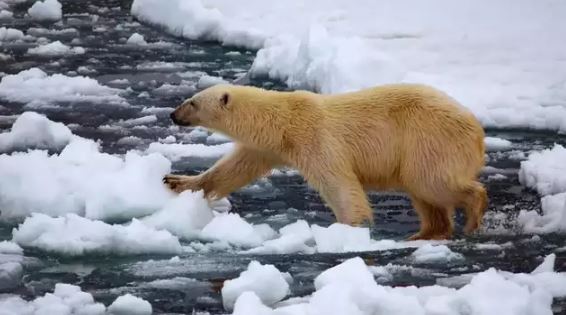In the far reaches of the Arctic lies the world’s largest national park, a place so vast and remote that it remains one of the least explored regions on Earth.
Northeast Greenland National Park, covering an astounding 972,000 square kilometres (375,000 square miles), is not only the largest terrestrial protected area but also one of the most isolated and pristine wildernesses in the world.
Northeast Greenland National Park, established in 1974, spans nearly half of Greenland’s landmass. Its enormous size dwarfs other national parks and even many countries, making it a unique environmental treasure. The park’s landscape is dominated by towering glaciers, expansive ice caps, deep fjords, and rugged mountain ranges. Despite its harsh and icy environment, the park is home to a surprisingly diverse array of wildlife.
The park’s isolation has allowed its ecosystems to remain largely undisturbed. Polar bears, one of the most iconic Arctic species, roam the icy terrain in search of seals, while musk oxen and arctic foxes traverse the tundra. The surrounding waters are inhabited by various species of seals and whales, adding to the park’s rich biodiversity. Birds also flock to the region during the summer months, with species such as the Arctic tern and barnacle goose nesting in the relative safety of this remote haven.
What sets Northeast Greenland National Park apart is not just its size, but its remoteness. The park is located in a region where the Arctic Ocean meets the Greenland Sea, far from human habitation. There are no permanent residents within the park, and the closest towns are hundreds of kilometres away.
The park’s isolation poses significant challenges for those wishing to visit. Most visitors arrive by ship during the brief summer season when the ice recedes enough to allow passage. The journey to Northeast Greenland National Park is not for the faint-hearted, as it involves navigating through some of the most inhospitable and rugged terrain on the planet.
The extreme conditions and isolation of Northeast Greenland National Park have made it an invaluable sanctuary for wildlife and a critical area for scientific research. The park’s relatively untouched environment provides crucial insights into the effects of global warming on polar regions.
Furthermore, the park is a vital refuge for Arctic species, many of which are facing increasing threats from climate change and human activities elsewhere in the Arctic. The protection of this vast area ensures that these species can continue to thrive in their natural habitat.
The sheer size and remoteness of Northeast Greenland National Park make it a place of awe-inspiring wilderness, where nature reigns supreme, undisturbed by human development.












